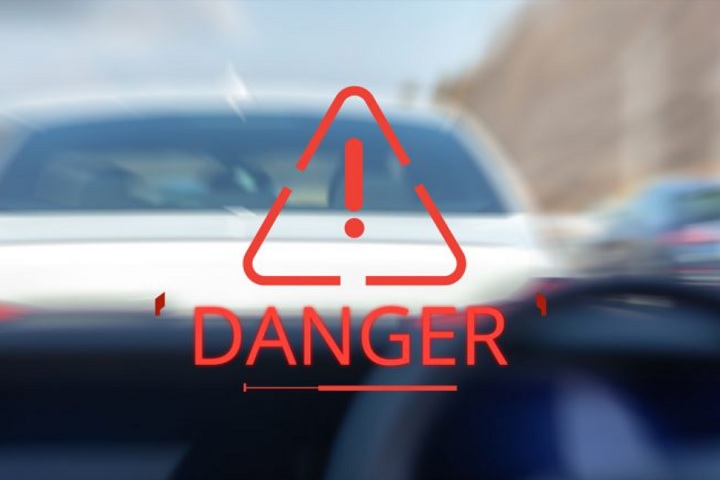
GEM Motoring Assist is calling on drivers to follow the ‘two-second rule’ and ensure they’re not putting lives at risk by tailgating.
In November 2020, Highways England commenced trials of new cameras to clamp down on tailgating, an offence it says is a factor in around one in eight casualties on England’s motorways and major A roads.
Motorists caught tailgating by the cameras can expect to receive letters advising them they were too close to another vehicle, highlighting the dangers of not leaving safe braking distances.
Speaking at the time, Jeremy Phillips, Highways England’s head of road safety, said the cameras have “highlighted just how many people are driving too close on our roads” – with 26,000 offences detected in the first two months of the trial.
GEM Motoring Assist is concerned that ‘too many motorists are simply unaware of the distance they need to stop safely in an emergency’.
The motoring organisation is calling on drivers to put into practice the ‘two-second rule’ on every journey.
Neil Worth, GEM chief executive, said: “Drivers regularly place being tailgated up there at the top of the list of annoying, unpleasant and downright dangerous threats they experience on the road.
“Imagine a sudden problem ahead of you on a motorway or dual carriageway. According to the Highway Code, if you’re driving at 70mph you will need a minimum of 96 metres to come to a stop. This relies on your being alert and able to react immediately to the problem you’ve spotted ahead.
“Any sort of distraction will compromise that ability, meaning you will continue driving towards the problem at more than 60 metres per second.
“The two-second rule is a great guide, and it works because it’s time-based, not distance-based. There’s flexibility that matches your speed, so it doesn’t mean carrying a spreadsheet of distances and speeds around in your head.”
Not convinced that “Most drivers drive around the one second or even less following distance…” Nigel. A very small number of agggresive drivers will no doubt do this at low speeds certainly and in urban and on single c/way roads, but in my experience, most drivers are not that suicidal – unless they’re in lane three of a motorway, when too many drivers seem to have no concept of safety margins completely!
Hugh Jones, Cheshire
--1
Well at last we are starting to see an organization promoting a sound and common sense policy for safer driving habits and not suggesting that close following is just an anti-social action causing irritation to a driver in front.
It is estimated that around 30% of crashes are the result of close following, in other words front to rear-end shunts. Firstly, close following itself is ticketable with £100 fine and 3 points on the licence but, more importantly, HC 126 says that you must be able to pull up in the distance you can see to be clear. So any front to rear-end shunt principally contravenes this and should make such drivers liable to prosecution (HC 126 + Para 3 of the HC Introduction). If this was implemented then literally, in one swipe and without any new legislation, it would be possible to increase road safety by up to 30%.
On following distance, 2 seconds is the recommended MINIMUM. 2 seconds as such is liable to be a blue-smoke job and personally that is not for me. .Police driving schools used to teach a following distance of 3-4 seconds so that in the event of things suddenly going pear shaped in front it would be possible to pull up ‘undramatically’. In other words without throwing granny through the windscreen.
A further interesting point is in in-car cameras. Most drivers drive around the one second or even less following distance so in the case of impact the evidence from their front facing camera is only going to prove they could not pull up in time (aka HC126 above). However, those with rear facing cameras could (almost regularly) supply evidence of close (and even aggressively close) following which under the increasing trend (and in the absence of sufficient roads policing) could send such information to their local Force for potential action. Even a letter might make the difference.
Once prosecution under HC126 got into the public domain the ripple effect to increase safety could be dramatic and would be the start of drivers generally starting to take ownership of their own safety, one might say instead of relying on gizmos. The idea that you can set an automatic braking system to a following distance of say, 1 to 1.5 seconds and sit back in confidence that the system will take of you frankly fills me with horror, but I have ridden with just such a driver.
Nigel ALBRIGHT
--1
The problem with specifying a time or a distance, even as just a guide is that some drivers will treat it like a speed limit i.e. something to aim for.. no more and no less… as if one should always stay rigidly two seconds behind the vehicle in front! Two seconds may be okay at low speeds but at higher speeds, stay well, well back. There’s no need to drive close to the vehicle ahead…it’s not a race.
Hugh Jones, Cheshire
0